How to Plant Bush Beans in the Garden
Here’s how to plant bush beans in the garden.
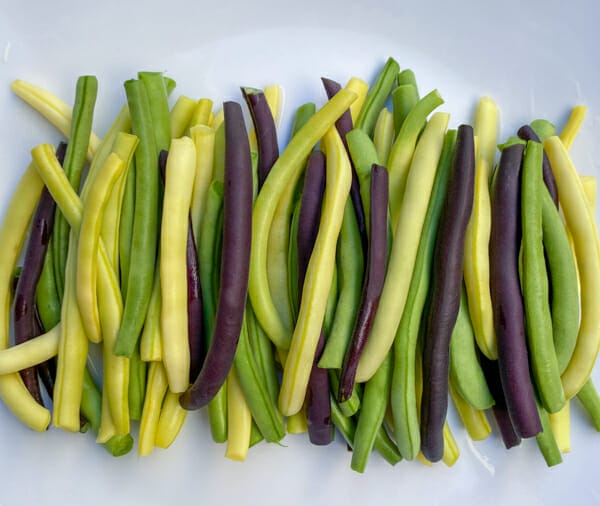
Type of Beans
There are three main types of beans to grow in the garden – bush beans, pole beans and dried or shelling beans. Within these three categories there are numerous different varieties to choose from.
Bush beans are my favourite kind of beans to grow. They grow 2-3 feet tall and wide and don’t need any support system. They mature quickly and ripen in batches, so you’ll get a lot of beans to eat or to freeze at a time. The more you pick, the more you’ll get for about two to three weeks. You can leave bush beans to dry and harvest them as dried beans or as seed for next year.
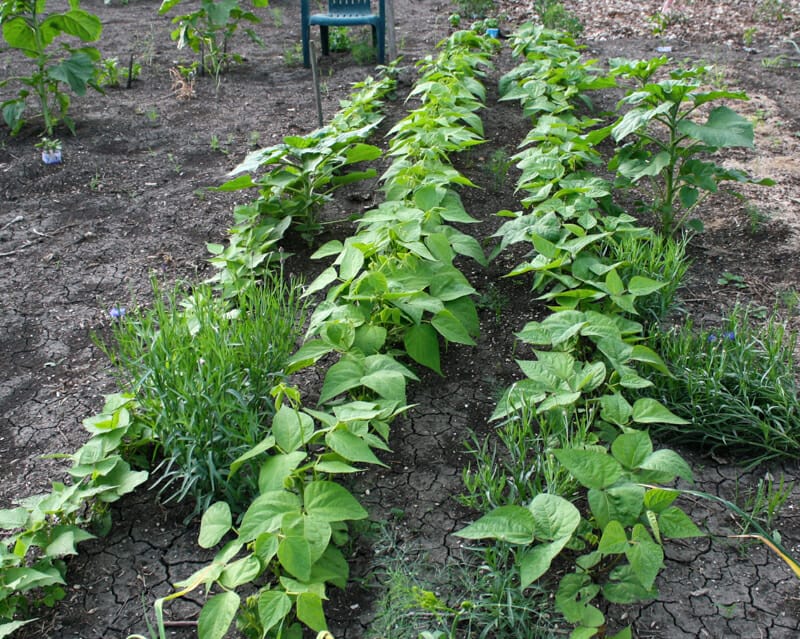
Pole beans are ones that grow continuously on long vines. They can grow as tall as 12 feet and therefore need to be supported by some sort of structure. Pole beans mature later than bush beans, but will continue to produce beans until frost stops them. This means you’ll have a steady, but smaller supply of ripe beans compared to bush beans.
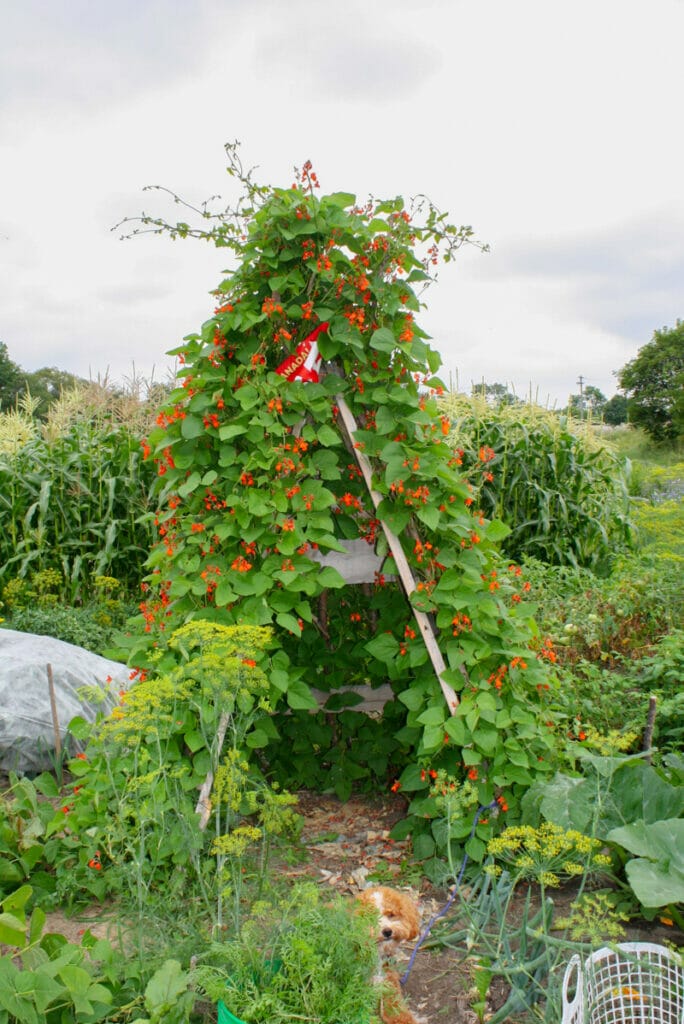
Dried or shelling beans are ones that are specifically grown for the dried bean inside the pod. The green pod, looks very similar to bush or pole beans and grows in a similar fashion, but the pods are too fibrous and tough to be enjoyed as a green bean. These include kidney beans, navy beans, lima beans, etc.
While I’ve tried growing all three type of beans, my favourite for flavour and freezing are bush beans. We usually grow Tendergreen Improved Bush Beans, Royal Burgundy Bush Beans and Improved Golden Wax Bush Beans.
The Magic of Purple Beans – Royal Burgundy Bush Beans
When my kids were little, burgundy beans were their favourite because they change colours when cooked. That’s right, those burgundy beans will turn green when cooked. Try it! The magic comes from plant pigments called anthocyanins. Anthocyanins are a type of flavanoids that have beneficial antioxidant properties.
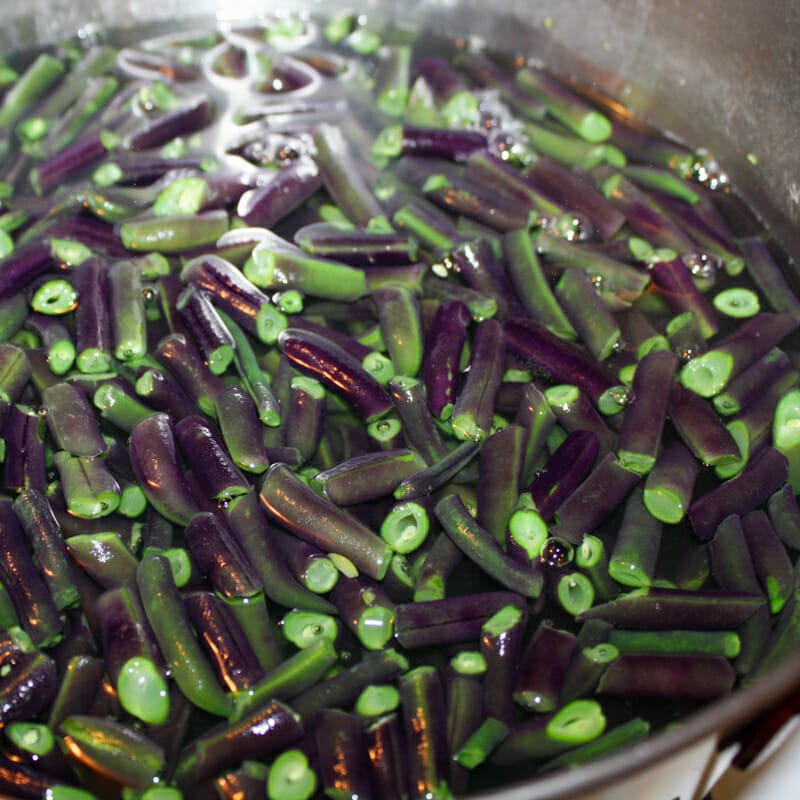
HOW TO PLANT BUSH BEANS
Seed beans directly in the garden, they do not transplant well and their short growing season is perfect for direct seeding. The big seeds make them ideal for little garden helpers to put in the ground.
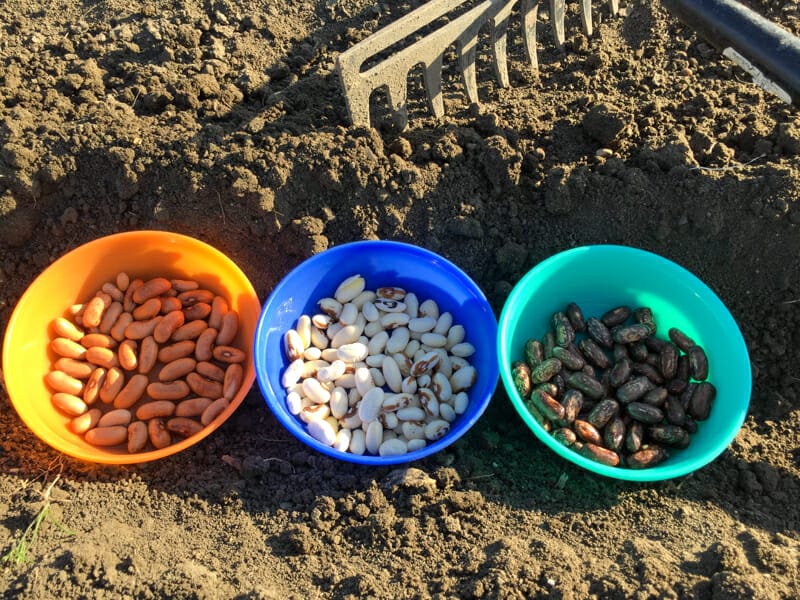
WHEN TO SEED BEANS
Beans prefer warm soil and are considered a warm weather crop, so plant after risk of frost has past. They prefer their soil to be in the range of 21-26°C (70-80°F). If you put the seed in before then, the seeds may rot before they send up sprouts.
Here in my Winnipeg garden – Zone 3b, I usually seed beans between May 24 and June 1. It varies from year to year depending on soil conditions, moisture, frost and air temperature. During this time frame, I watch the weather forecast and try to get the beans in just before a rain.
DAYS TO GERMINATION
Bush beans, depending on variety will within in 6-14 days.
DAYS TO MATURITY
Depending on variety, bush beans will mature within 48-55 days.
WHERE TO PLANT
Full sun is best.
SOIL PREFERENCE
Bush beans prefer well drained, fertile soil. Consider adding compost to the soil before seeding.
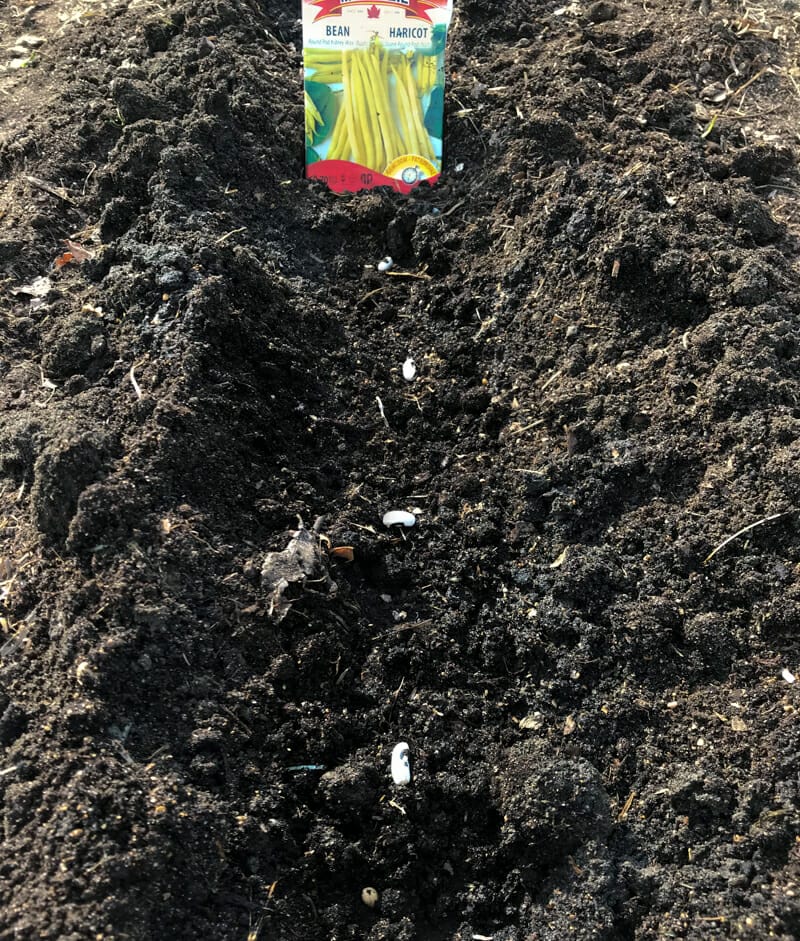
SEED SPACING
Space seeds 3″ (7.5 cm) apart.
It’s okay to plant different varieties of bush beans together.
DEPTH OF SEED
Plant 1″ (2.5 cm) deep.
ROW SPACING
Space rows 24″ (60 cm) apart. It looks like a lot when you put the seeds in the ground, but remember these beans are bushy!
COMPANION PLANTING
Plant beans next to: Carrots, Cabbage, Cauliflower, Cucumber, Marigolds, Corn
Don’t plant beans next to: Chives, Leeks, Garlic, Onions, Sunflowers
SPECIAL TIPS FOR PLANTING BUSH BEANS:
- Consider continuous seeding so you can harvest bush beans for longer. Sow every 2 weeks until 8 weeks before fall frost.
- Unlike peas, Do Not soak bean seeds before planting. Soaking them may cause them to split in half.
- Bush beans can be susceptible to fungal disease, so stay out of the bean patch when it’s wet as this may transfer the fungus more.
- Consistent moisture and keeping the bean patch weed free helps ensure a big harvest.
- Bush beans can be planted in containers at least 15″ wide.
- Remember, the more you pick, the more you’ll get. Even if you can’t keep up with eating them all, fresh beans are always welcomed by friends, family and food banks. Once you stop picking beans, the plant will stop producing new pods and whatever is left on the bush can be left to dry.
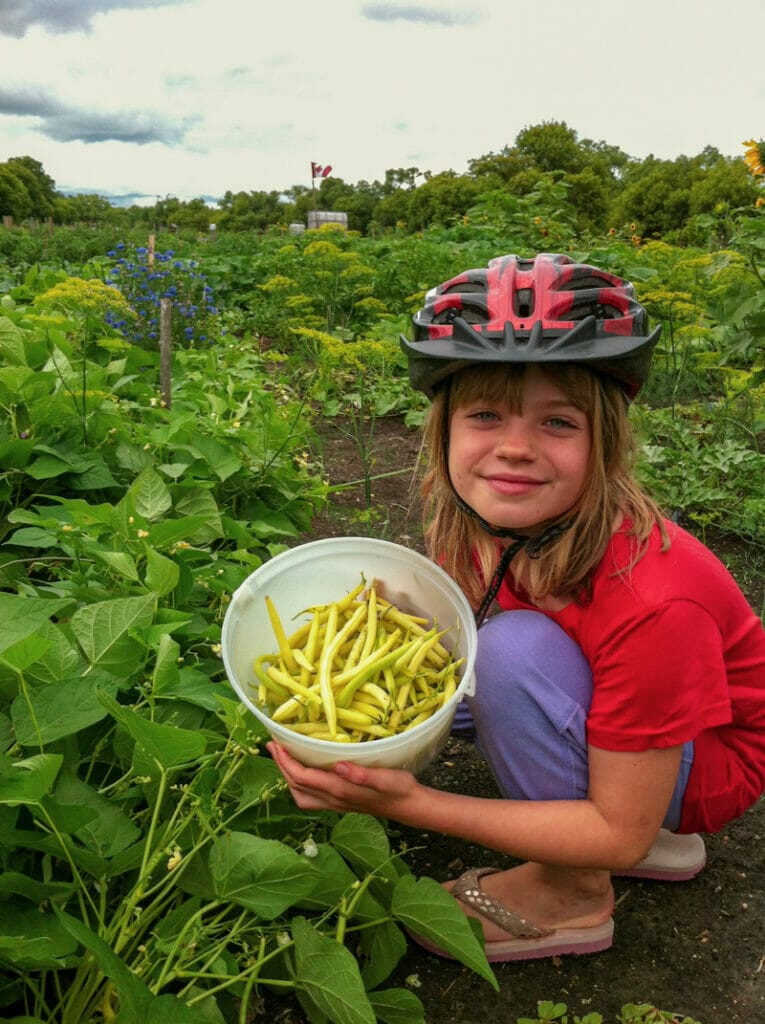
Here are some other How To’s to get your garden going this season:
When to Plant Different Vegetables
Share your favorite bean recipe in the comments below or share your photos and ideas with me on Instagram @getgettys or Facebook @GettyStewart.HomeEconomist.
Getty Stewart is a Professional Home Economist, speaker, frequent media guest and writer dedicated to putting good food on tables and agendas. She is the author of several recipe books on enjoying and preserving fruit, Founder of Fruit Share, a mom and veggie gardener.
Sign up to get articles by Getty delivered to your inbox. You’ll get recipes, practical tips and great food information like this.

